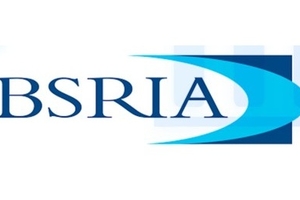
The global air conditioner market has grown continuously over the past decade, registering a healthy compound annual growth rate of around 7%.
2023 followed this trend, with global sales of all air conditioners increasing by 5% compared to 2022 in value terms. The residential air conditioner market grew by 9.4%, while the commercial air conditioner market grew by 4.6%.
While the growth in manufacturing and logistics costs slowed in 2023, the need for more efficient products supported the market growth in value terms.
Demand continued to grow in most regions, but sales patterns varied greatly between regions and countries.
The pace of phase-out of conventional refrigerants varies across countries, market structures are different, and while the overall economic situation is relatively grim worldwide, some countries have implemented specific support measures that have had a positive impact on sales.

The fastest market growth was recorded in the Middle East.
Saudi Arabia has implemented some of the most stringent energy conservation standards to meet the region’s rapidly growing electricity demand.
And in the UAE, regulators like the Abu Dhabi Quality and Conformity Council (QCC) are actively developing standards to ensure environmental sustainability and consumer safety. In August 2023, the QCC introduced the “Special Certification Requirements for Ozone-Friendly Unitary Air-Cooled Air Conditioners (QCC-RQ25-02)” and new Energy Efficiency Ratio (EER) regulations, which have since transformed the UAE air conditioner market.
The US also saw a positive market environment, especially in the commercial segment, which exceeded expectations, fueled by investments in manufacturing, data centers, life sciences, and the hospitality sector.
Brazil and Mexico represent two bright spots in Latin America.
The Brazilian air conditioner market outperformed expectations in 2023, driven by robust economic growth, lower inflation and lower interest rates. Investments in healthcare, data centers and industry supported demand.
In Mexico, the air conditioner market showed strong growth, supported by booming tourism, foreign investment and moderate government spending ahead of the 2024 presidential elections.
Overall, the air conditioner market in Europe showed positive momentum in 2023, with growth of over 6% compared to 2022, despite headwinds from economic tensions and weak construction activity.
After months of uncertainty, the recently agreed revised F-gas proposal, which passed its first vote in the EU Parliament in January 2024, confirms that the next significant quota cut, originally scheduled for 1 January 2024, has now been pushed back to 1 January 2025.
Asia represents the largest share of the global air conditioner market. Overall, the Asian market is set to show healthy double-digit growth in 2023, supported by several positive developments in different countries.
The Chinese market saw volume growth, driven by the transition from R410A to R32 refrigerant, which accelerated in 2023. The economic downturn affected several commercial projects, but government support for high-tech industries helped support sales, especially in process industries.
The Building Energy Code, which mandates energy-saving measures, has contributed to the adoption of smart air conditioning systems in Vietnam and Thailand. In Thailand, increased demand for inverter air conditioners was also driven by rising energy prices. Government regulations in line with the Kigali Amendment to the Montreal Protocol support the transition to eco-friendly refrigerants.
The Indonesian air conditioner market continued its growth trajectory, with higher sales in various segments. Import restrictions in the high wall split market have boosted domestic production. Economic growth has boosted demand in commercial sectors such as hospitals, universities, and data centers.
The air conditioner market in India is a buoyant market supported by population growth, urbanization, and government incentives for domestic production. Energy efficient solutions and regulatory initiatives are aimed at meeting global sustainability goals. The shift away from HCFCs and growing demand for air-cooled chillers reflect the overall market trends for 2023.